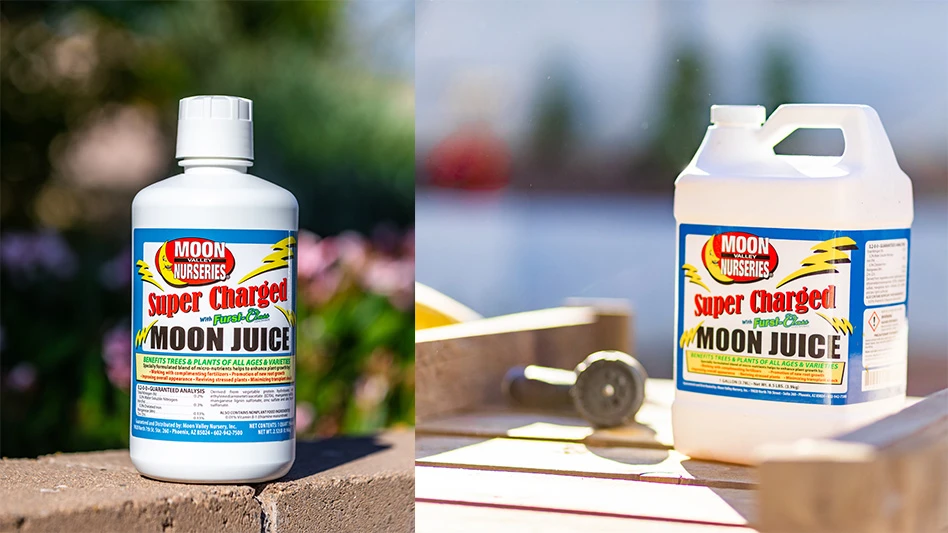Scouting is like flossing your teeth. You know you should do it because in the long run it will save you money, but you get busy, make excuses and don’t get it done. I’m going to give you some hints to help speed up the scouting process (yet still be effective).
{sidebar id=66}
First, let’s take a step back and think about why we scout. Ideally, it is to survey a crop to ascertain if problems are happening that you may not see with a quick drive-by in the golf cart. Close inspection is one way you can find problems when they are still small and not out of control. Another goal of scouting that is often overlooked is to determine if control methods you use are actually working.
So often people spray a pesticide and assume just because the pest is on the label that a spray will control it. What if the pest had been identified incorrectly? What if the pH of the spray water was off? What if you didn’t get adequate coverage? Today, a big concern is whether your pest may be resistant to your spray product. The small problem could get a lot worse before you realize there was a failure with your control methods.
Use your artistic side
One place I often find good bug hunting supplies is at an art supply store. The stores have lots of great containers to hold insects as well as painters’ palettes to use in scouting. Who would have thought a painter’s palette would be a scouting tool? Everyone should have one handy because instead of flipping over leaves looking for pests you can hold the palette under the leaves and then tap the plant. The hidden insects and mites will fall onto the pallet to make it easier to see what you have on the plant. This also allows you to count the pests. This is especially great for mites and thrips.
A palette is about the cheapest scouting tool you can get. They may cost $2-$10 each. I just bought some great ones on eBay. You can do something similar by using a clipboard and white sheet of paper. The paper can blow up, so be sure to put a binder clip on the bottom to hold the paper down.
A good scouting painter’s palette will be:
* White so you can see the pests.
* Plastic so it can be washed.
* Equipped with thumb holes to make it easier to hold.
* A size that’s easy to manage.
If you need to collect the little critters without crushing them, take a small paintbrush (back to the art supply store) and dip the bristles into alcohol and then just touch it to the insect or mite on the palette. They will stick to the wet bristles and then can easily be transferred to a vial of alcohol by dipping the bristles in.
Follow the leader
When going to an area to scout, one of the first things I like to do is stand there and look around. I look for my “indicator bugs” -- ladybird beetles, wasps and flies. The indicators often lead me to insect problems. Ladybird beetles don’t just hang out for the fun of it -- they are looking for food. Granted, ladybird beetles also feed on pollen, but they love their meat in the form of aphids, mites and other soft-bodied insects. So watch ladybugs and see where they are going or what crops they are on. There may be some pest insects nearby. If you see a plant with several ladybirds on it, scout closely. I bet you’ll find some pests or what’s left of them after the ladybirds fed on them.
Flies and wasp are another pair of indicators to observe. Some species of these insects are often on the hunt for something sweet to eat. So they fly around looking for honeydew to feed on. Honeydew is an excretion from some soft-bodied insects like aphids, whiteflies, mealybugs and soft scales. It falls from these pests onto leaves below, making a sticky treat. So if you see flies or wasps feeding on honeydew, look at the leaves above and you can often find pests hiding on the undersides.
In addition to feeding, these insects are also looking for a place to lay eggs. A mother ladybird beetle is not going to lay eggs where there would not be any food for her carnivorous children, so if you find ladybug eggs look closely. The same is true for flower flies and other beneficials: their young are meat eaters.
Mapping can help you find your way
Let’s face it. When you’re standing in the middle of several acres of one crop it’s sometimes hard to remember where you saw a pest or where you had left off scouting before. Keep a map of your nursery with you and maintain records of where you scouted each week (and where you have found pests).
You can look at the maps over time and see where the problem areas are so you know where to spend more time scouting in the future. This will keep you from overreacting and make your targeted control more effective.
Mapping is also a great tool if you have someone on staff scouting who leaves the company, and you have to hire a new scout. The new scout can go through these records and get an idea of what has been going on.
Drawing an accurate map can be easier then you think. First, don’t rely on your perception of what you think your nursery looks like. It might not be accurate. With amazing technologies, you can go online and use programs like Google Earth to view satellite images of your site. You can print the images and trace the beds and houses, or you can use editing software to draw them on the computer. When you need a map, you simply print it out.
Trap your problems
How often do you flip a leaf and you see an insect fly away or try to catch a pest and it escapes? You can use yellow sticky cards to trap these guys so they cannot escape. Sticky cards are an inexpensive, easy way to monitor populations and identify pests. An employee can put them out each week and then bring them to the person in charge of pest management. Label where each card came from so the pest management specialist can later check those problematic areas more intensively.
Scouting doesn’t have to be so time-consuming. You will actually save the time you put into it by not making unnecessary pesticide applications. Using a few simple tools can help save you some time and lots of money.
{sidebar id=2}
- Suzanne Wainwright-Evans
August 2008
Get curated news on YOUR industry.
Enter your email to receive our newsletters.
Latest from Nursery Management
- Society of American Florists accepting entries for 2025 Marketer of the Year Contest
- Sustainabloom launches Wholesale Nickel Program to support floriculture sustainability
- American Horticultural Society welcomes five new board members
- American Floral Endowment establishes Demaree Family Floriculture Advancement Fund
- The Growth Industry Episode 3: Across the Pond with Neville Stein
- The Growth Industry Episode 2: Emily Showalter on how Willoway Nurseries transformed its business
- March 2025 issue recap
- Gratitude as a marketing strategy





